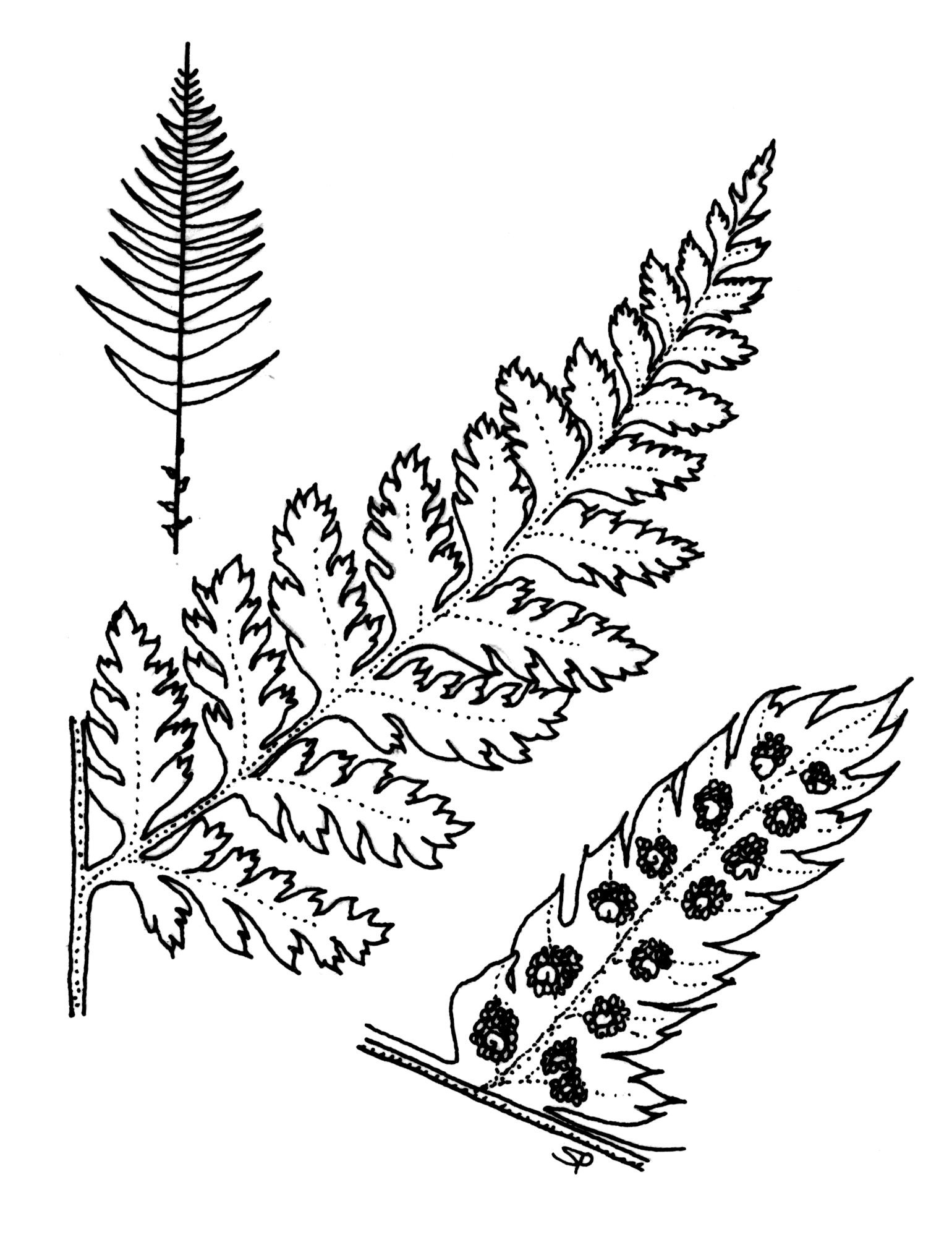
Greek drys - oak, pteris - fern, possibly in referring to the preference of European species for oak forests.
Terrestrial ferns. Rhizome short-creeping, tending upward to erect, woody, mostly thick and covered with scales. Sterile and fertile fronds mostly similar. Fronds divided 2-3 times, generally broad at the base, the fertile ones sometimes slightly smaller, evergreen or deciduous, in clusters; stalks scaly. Sori in a single row on either side of midrib, away from margin, often large, round to kidney-shaped. Indusium kidney-shaped.
Dryopteris tokyoensis (Makino) C. Chr. is ocasionally available; it has fronds divided once with segments that become shorter towards the base of the frond, the individual segments broadening towards their attachment to the midrib.
Propagation: Spores, some species by division.
Recognition: Sori away from the segment margins and with kidney-shaped indusia. Polystichum has indusia mostly round or sometimes absent and Lastreopsis has mostly hairy, not scaly, stalks. The groove in the axis may be discontinuous.
Literature: Christensen (1919), Ching (1938), Fraser-Jenkins (1989).
c. 150 species, mostly Northern Hemisphere.
Created by: Val Stajsic
Updated by: Val Stajsic, May 2018
